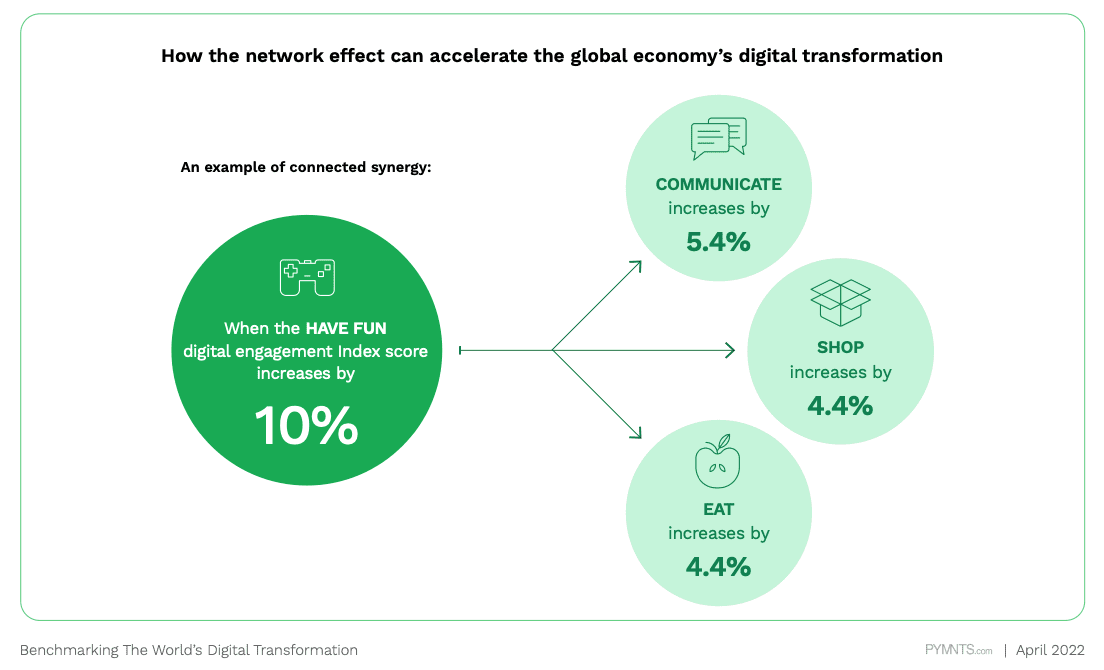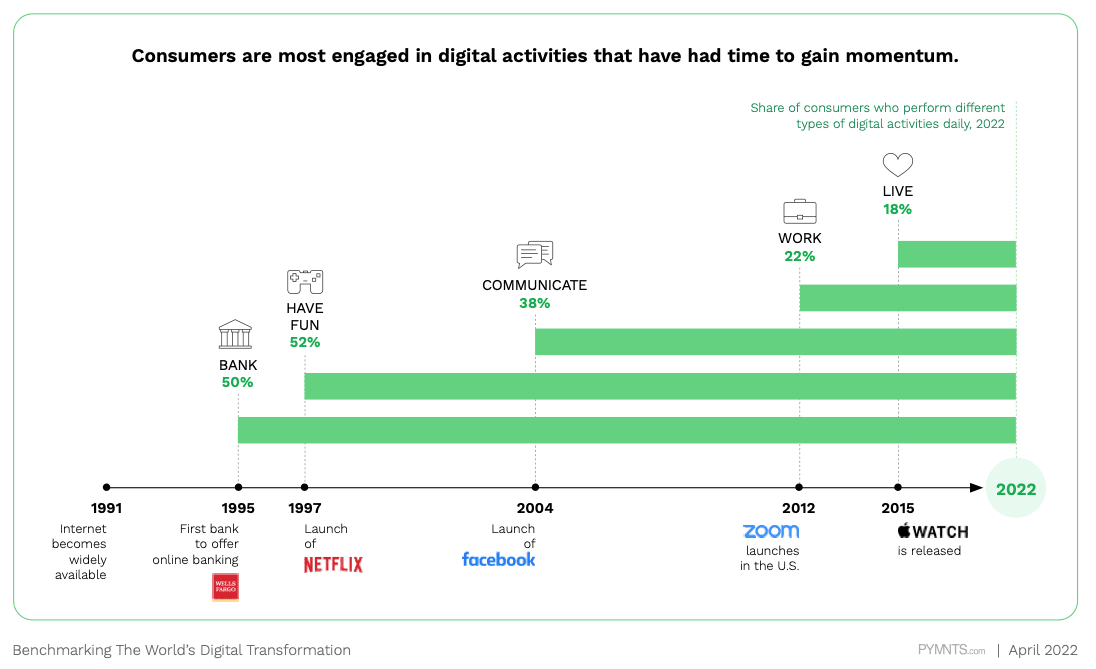
Since its founding as an app that brought diners and restaurants together for online ordering and delivery, DoorDash has expanded to deliver retail products and prescriptions — all in an effort to keep customers transacting more on its platform.
The more DoorDash users who do that, and the more often they do it, the more retailers and restaurants will want to become part of the DoorDash ecosystem.
The increased usage and frequency will also shift more similar transacting behaviors from analog to digital.
This is the “network effect,” and it drives the organic growth of the global ConnectedEconomy™, according to “Benchmarking The World’s Digital Transformation,” a PYMNTS and Stripe collaboration based on data collected from over 15,000 consumers across 11 countries.
Get the report: Benchmarking The World’s Digital Transformation
Across the 11 countries studied in the report, PYMNTS found that digital activities that are transactional in nature show strong synergies.
For example, of the projected 274 million consumers in those countries who currently use delivery aggregators to order food from restaurants, 67% also currently buy some of their groceries online, and 71% buy some of their retail products online.

The network effect helps explain how increased consumer engagement in one online activity can boost engagement in another. For example, when the score of “shop online” increases by 10%, the score of “grocery order” increases by 6.9% and the score of “restaurant order” increases by 6.2%.
The study also found correlations between engagement in adjacent digital activities. For example, it found a strong network effect between “have fun” and “communicate.” Namely, when the score of “have fun” increases by 10%, the score of “communicate” increases by 5.4%.

By making more of the day-to-day activities more digitally accessible to more consumers, innovators can deliver a digitally transformed, connected economy across borders and within countries.